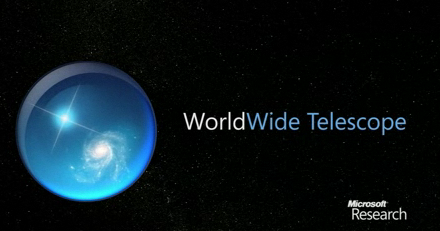Microsoft launched WorldWide Telescope
At the TED Conference on February 27, 2008, Microsoft unveiled its new project called WorldWide Telescope , promising a beta version by the end of May 2008. The development of the project was laid back in 2002 by Jim Gray, one of the leading employees of the Microsoft Research eScience Group, who disappeared in the Pacific last year.

WorldWide Telescope is based on the Visual Experience Engine and uses scientific data collected over the years using the Hubble and Spitzer telescopes, and the storage capacity is several terabytes.
')
With this service, users will be able to study the solar system, galaxies, UFOs, etc. According to reliable sources, today in the WorldWide Telescope database are more than 300 images of stellar planetary systems. The service also allows you to create a web tour of outer space. WorldWide Telescope will primarily be competing with Google Sky and Stellarium .
Download program
via The Social Trend

WorldWide Telescope is based on the Visual Experience Engine and uses scientific data collected over the years using the Hubble and Spitzer telescopes, and the storage capacity is several terabytes.
')
With this service, users will be able to study the solar system, galaxies, UFOs, etc. According to reliable sources, today in the WorldWide Telescope database are more than 300 images of stellar planetary systems. The service also allows you to create a web tour of outer space. WorldWide Telescope will primarily be competing with Google Sky and Stellarium .
Download program
via The Social Trend
Source: https://habr.com/ru/post/25329/
All Articles